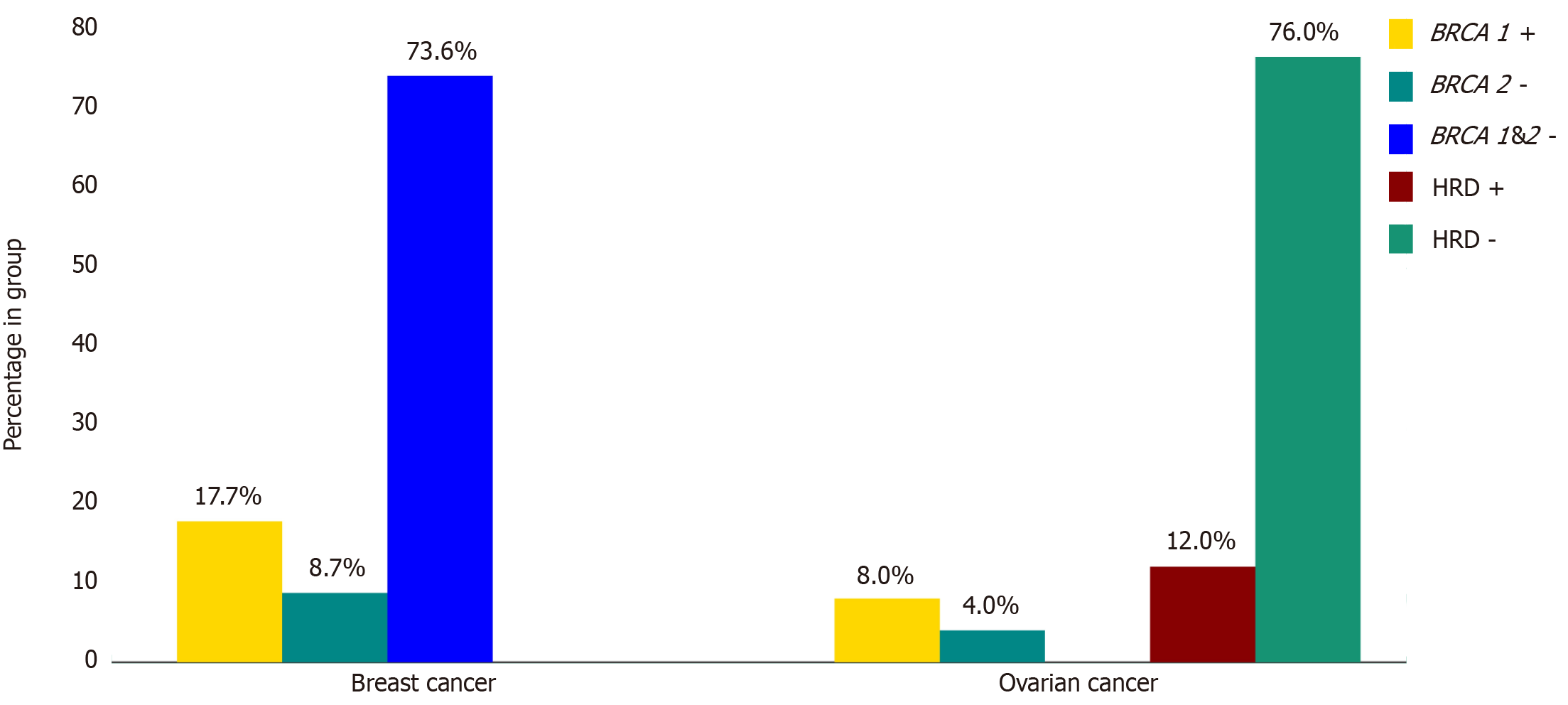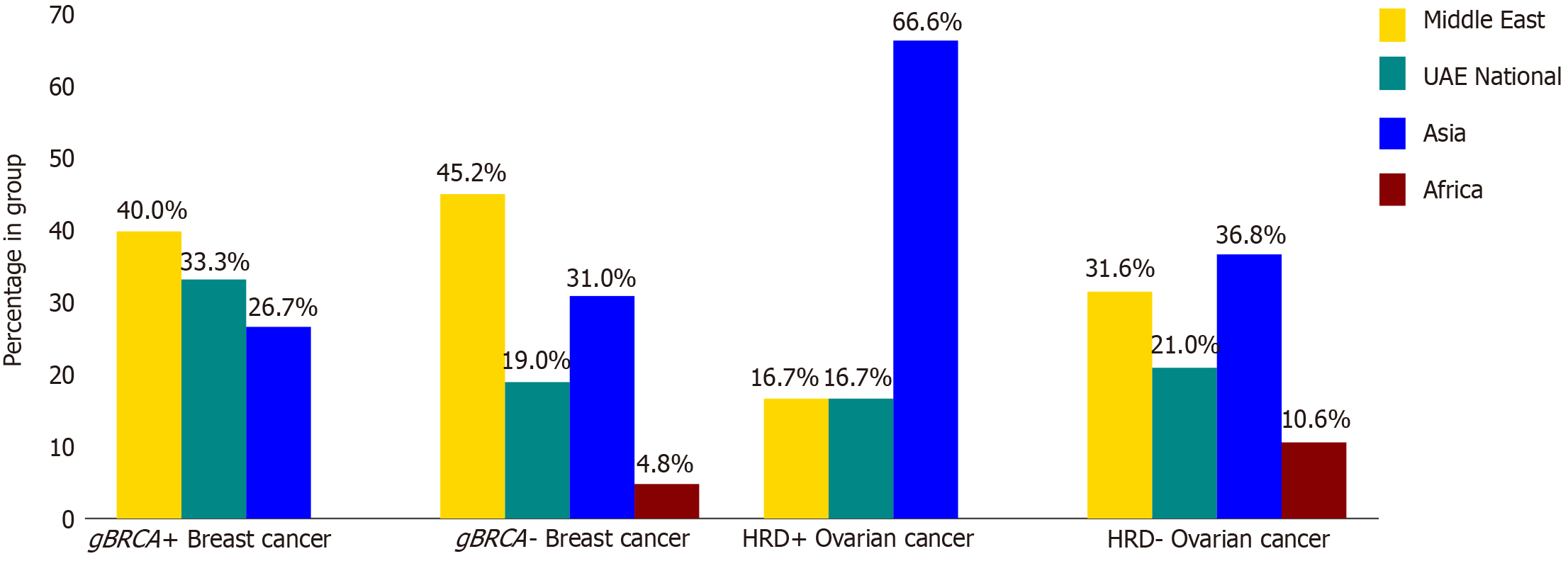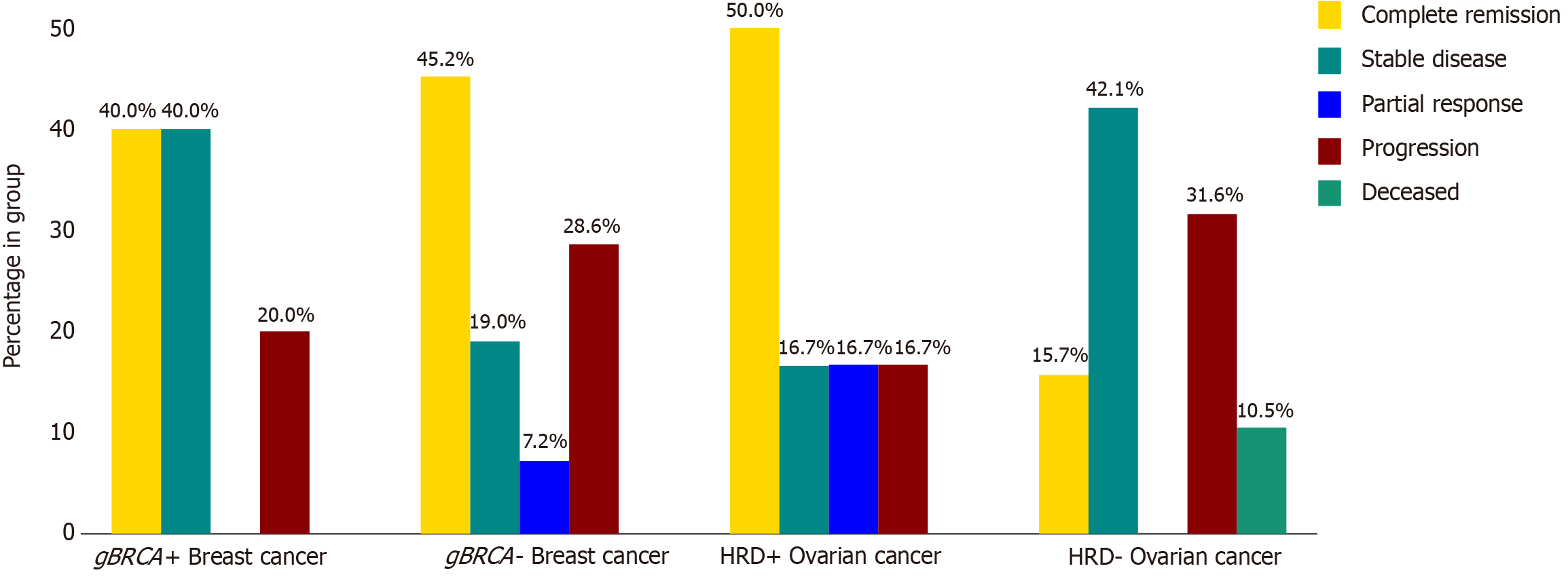Copyright
©The Author(s) 2024.
World J Clin Oncol. Jul 24, 2024; 15(7): 848-858
Published online Jul 24, 2024. doi: 10.5306/wjco.v15.i7.848
Published online Jul 24, 2024. doi: 10.5306/wjco.v15.i7.848
Figure 1 Distribution of breast cancer gene mutations and homologous recombination deficiency in breast and ovarian cancers.
Among breast cancer patients, 17.7% (10/57) harbored pathogenic mutations in germline BRCA1 (gBRCA1), while 8.7% (5/57) had mutations in gBRCA2. In the ovarian cancer group, 8% (2/25) of patients had gBRCA1 mutations, 4% (1/25) had gBRCA2 mutations, and 12% (3/25) had homologous recombination deficiency.
Figure 2 Breast and ovarian cancer distribution based on mutation status and ethnicity.
A higher percentage of breast cancer (n = 57), both germline BRCA (gBRCA)-positive and gBRCA-negative, was found in Middle Eastern patients excluding United Arab Emirates nationals. Conversely, a higher percentage of ovarian cancer (n = 25), both homologous recombination deficiency HRD-positive and HRD-negative, was found in Asian patients.
Figure 3 Response status to chemotherapy of breast and ovarian cancers with and without mutations.
Homologous recombination-deficient (HRD) ovarian cancer (n = 6) had a higher percentage of complete remission (3/6) than cancer not HRD (3/19). While germline BRCA gene non-mutated breast cancer (n = 42) patients showed a slightly higher complete response rate (19/42), the overall treatment response remained similar in both mutated and non-mutated groups.
- Citation: Syed N, Chintakuntlawar AV, Vilasini D, Al Salami AM, Al Hasan R, Afrooz I, Uttam Chandani K, Chandani AU, Chehal A. Low testing rates and high BRCA prevalence: Poly (ADP-ribose) polymerase inhibitor use in Middle East BRCA/homologous recombination deficiency-positive cancer patients. World J Clin Oncol 2024; 15(7): 848-858
- URL: https://www.wjgnet.com/2218-4333/full/v15/i7/848.htm
- DOI: https://dx.doi.org/10.5306/wjco.v15.i7.848











